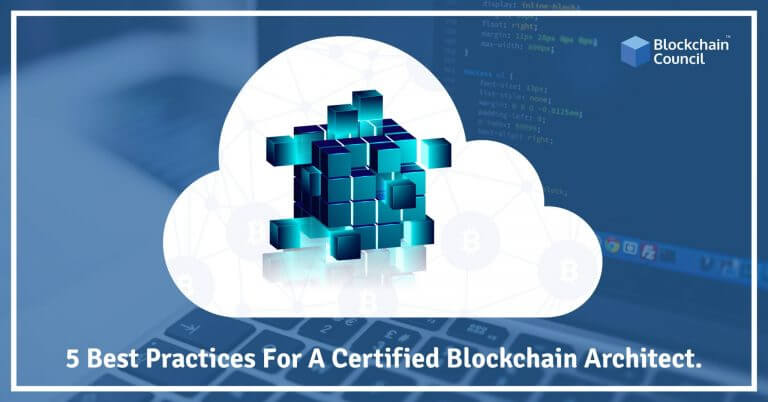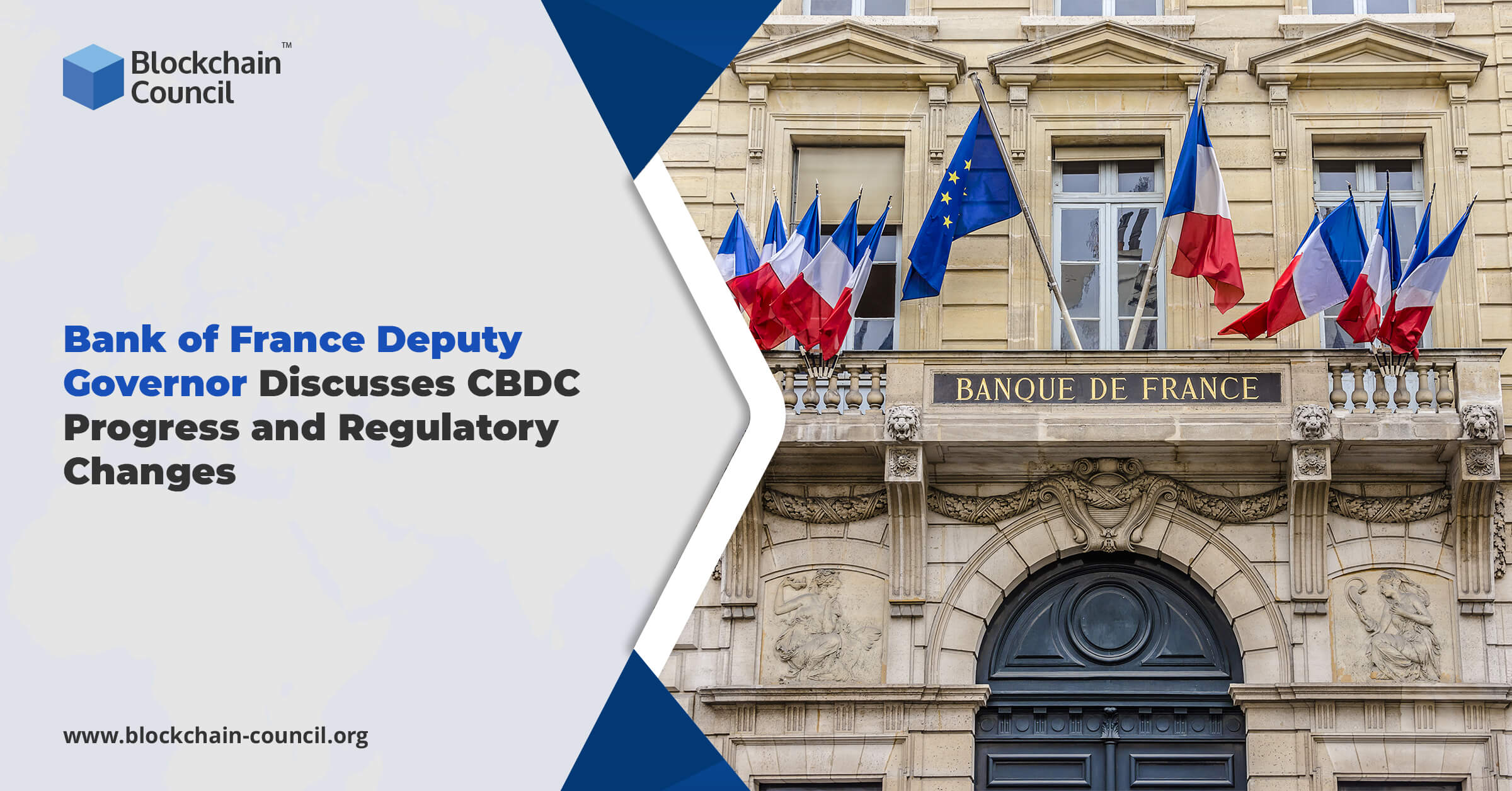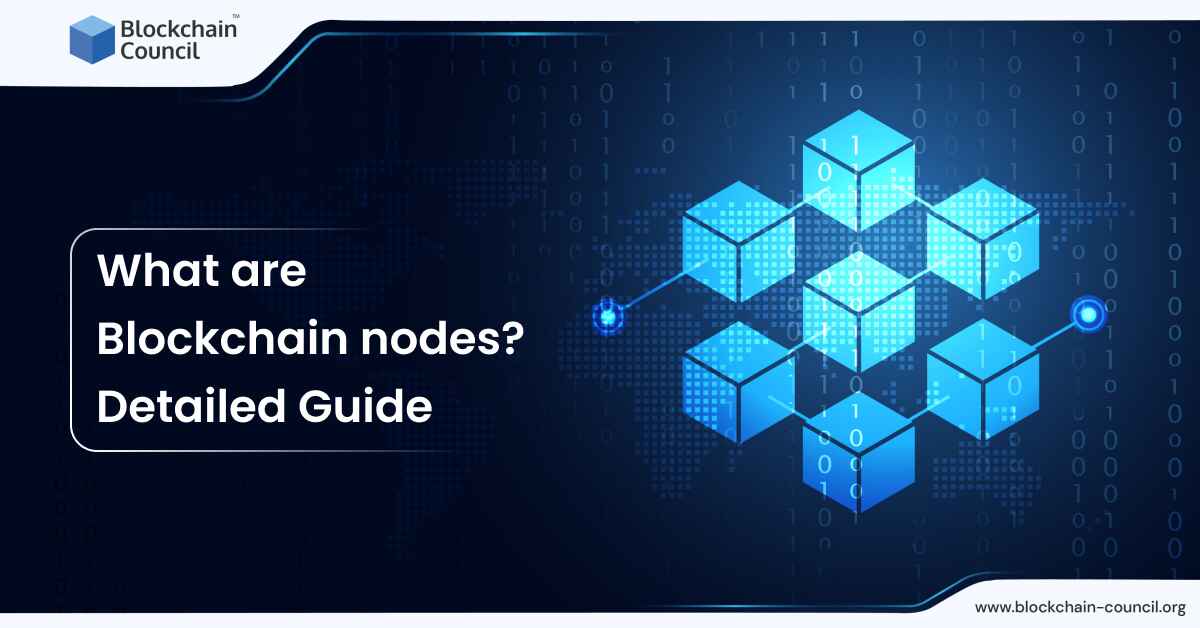
- Toshendra Kumar Sharma
- June 12, 2019
Introduction
The technological domain has undergone a tremendous transformation with revolutionary advancements like blockchain increasing in popularity each day. Blockchain is an open, distributed, and decentralized ledger where data is stored in the form of blocks. The blocks are linked through cryptography. Cryptography refers to studying those techniques which ensure secure communication. Blockchains are resistant to modification of data. In a blockchain, information is shared over a peer-to-peer network which means that all the computers on the network hold an identical copy of the ledger of transactions and can operate in a secure, transparent, and verifiable manner without the need for an intermediary. This article will focus on the journey towards becoming a blockchain architect and its best practices.
Who Is A Blockchain Architect?
A blockchain architect is one who creates and selects the most appropriate architecture for a system. He chooses it such that it suits the nature of the business, satisfies the business needs, satisfies stakeholder requirements, and achieves the desired goals taking into account the given constraints. A blockchain architect is required to make critical decisions, thereby giving specific directions for a system in terms of implementation, operations, and maintenance. He takes vital decisions after understanding and evaluating alternative options. He acts as an agent of change in organizations where processes need to be created and maintained for architecture-centric development.
Skills And Prerequisites Needed For A Blockchain Architect
- Passion for cloud computing, blockchain, and distributed ledger technologies.
- Deep technical knowledge.
- Strong business acumen and interpersonal skills.
- Familiarity and prior experience with blockchain platforms and templates.
- Passion for designing and building cloud solutions for a diverse set of customers.
Roles And Responsibilities Of A Blockchain Architect
- Architect end-to-end solutions for customers using blockchain.
- Develop an overall blockchain ecosystem engagement strategy.
- Create performance metrics to measure blockchain performance.
- Create risk/ failure analysis and prepare risk mitigation.
- Create best practices or guidelines for blockchain teams.
- Training or mentoring technical staff concerning blockchain concepts, tools, and frameworks.
A blockchain architect needs to incorporate the following five best practices while designing blockchains for businesses.
1. Open Governance
Even complex problems can be solved with an ideal resolution. This is where a blockchain architect pitches in. He chooses a platform with open governance, which will enable your company to make minor changes to the system. He selects a code base which is known to developers. This helps them establish and underline clear processes for making alterations, updates, and developments. This system must be transparent and must be one which ensures privacy, confidentiality, and integrity. A blockchain architect designs solutions which enable organizations to handle edge-to-edge entities, manage their inventory and track activities within the entire system.
2. Profound Knowledge Of Underlying Technology
A blockchain architect must build a blockchain which is modular as it allows customizing of modules and private chain operability. He designs a solution which has a two-part design and it is based on the blockchain network and distributed storage. This will help enterprises take maximum advantage of its most versatile modules. A blockchain architect designs an ideal platform which is equipped to handle large amounts of sensitive data. Such a modular architecture enables privately-enabled communication and tamper-resistant recording.
3. Skilled In Building Permissioned Ledgers
He must possess the skill of building open-source, public blockchains, which allows every participant on the system to download the blockchain client and participate in transaction validation. To make it more appealing to businesses, for example, in the case of Ethereum, the main chain must be modified such that it allows in the building of a permissioned ledger. This comprises of authorized active and passive nodes, which means only verified participants are provided access. Active nodes accept, verify, and confirm transactions which are if verified, appended to the ledger. Passive nodes are optional and if they are present, they accept, verify, and forward valid transactions to active nodes. Benefits offered by permissioned nodes are:
- Security.
- Speed.
- Efficiency.
- Immutability.
- Zero transaction fees.
- Interoperability: Compatibility with other systems.
- Decentralization.
4. Wide Range Of Developer Tools
An enterprise can function smoothly if the right tools have been installed, as any company is as good as its tools and techniques. The blockchain architect must use the appropriate tools which will simplify and accelerate the process of architecturing and modeling a network. A blockchain architect researches the right tools which would suit a particular enterprise’s IT architecture. These must be tools which accelerate the process of modeling assets, participants, transactions, and access controls. A blockchain architect gives utmost importance to the tools he uses as it helps in the quick creation of application user interfaces.
5. Scalability
A blockchain architect solves scalability issues by incorporating IPFS systems in enterprises. IPFS is a distributed file system which communicates with the blockchain layer though it operates outside of it. It helps store and retrieve data without burdening the blockchain. A blockchain architect designs a platform that can easily grow along with your blockchain business network. Scalability refers to the system throughput, which monotonically increases with the increase in the system’s computing nodes. Scalability is often multifaceted as it can represent any of the following three:
- Load scalability- A system’s ability to accommodate heavier or lighter loads.
- Functional scalability- The ability to enhance system capabilities by adding new functions.
- Generation scalability- Scaling up by using new generations of components.
Certified Blockchain Architect
Having discussed the advantages of blockchain certifications and the huge difference it makes to your career, let us now explore the ideal certification which acts as a stepping stone to your success.
Certified Blockchain Architect is a certification offered by the Blockchain Council. Blockchain Council is a prestigious platform comprising of an authoritative group of blockchain enthusiasts and experts who are evangelizing Blockchain products, research, use cases, development, and knowledge for a better world. Blockchain council creates a perfect learning environment and raises awareness among enterprises, developers, businesses, and society by imparting world-class education in the blockchain sphere. It is a private de-facto organization which works individually and proliferates blockchain technology globally.
The Certified Blockchain Architect is an exam-based certification which will offer you an in-depth knowledge of the architecture of blockchain platforms, business and technical components of blockchain architecture, protocols, functional risks, and the basics of blockchain architecture. This certification is self-paced and offers an exhaustive curriculum which has been carefully curated by acknowledged and like-minded industry experts. This certification offers you the perfect opportunity to evaluate your knowledge by way of the certification exam. Through enrolling in this certification, you will gain:
- Lifetime access to modules
- The ability to build your blockchain with the acquired knowledge.
- Implementing the skills learned in designing blockchain solutions for businesses.
Conclusion
Blockchains have carved a niche for themselves today across various industry verticals. Think no more! Enroll in the certified blockchain architect certification to have an instant positive impact on your career and multiply your earning potential manifold. It is time for you to set yourself apart from the rest of the pack by upgrading your knowledge base and building your professional credibility and reputation.





































































 Guides
Guides News
News Blockchain
Blockchain Cryptocurrency
& Digital Assets
Cryptocurrency
& Digital Assets Web3
Web3 Metaverse & NFTs
Metaverse & NFTs
